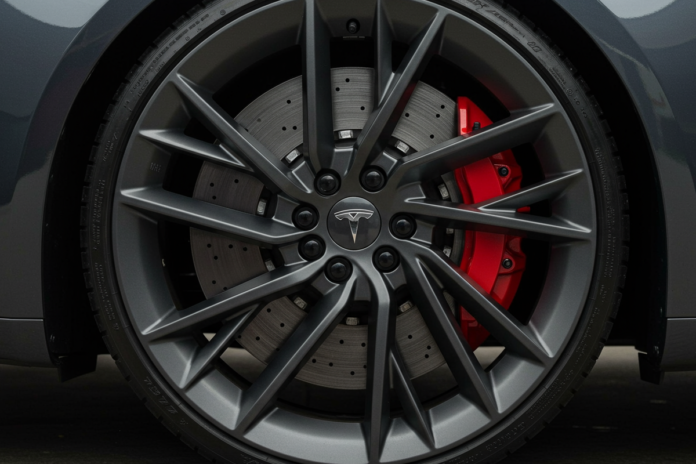In the race to create a greener future, electric vehicles (EVs) have long been celebrated for their near-zero tailpipe emissions. However, as CommaFast reveals, there’s another hidden advantage that may well silence the skeptics: EVs produce approximately 83% less brake dust compared to their internal combustion counterparts. This breakthrough not only boosts the environmental credentials of EVs but also marks a significant leap in automotive technology.
Unmasking an Overlooked Pollutant: Brake Dust
While EVs are famed for eliminating exhaust pollutants, traditional road vehicles generate unwanted particulates through wear and tear—notably from brake systems. Every time a driver applies the brakes, friction between pads and discs produces minute particles that contribute to urban air pollution. Although this process is completely normal, its cumulative effect on congested city streets raises both environmental and public health concerns.
Studies spearheaded by groups such as EIT Urban Mobility and Transport for London have thrown light on the discrepancy between powertrain technologies. Their extensive research indicates that electric vehicles, thanks to their innovative design, drastically reduce the emission of these particles by a staggering 83%. This finding underlines an additional compelling reason to embrace the shift toward electric mobility.
How Regenerative Braking Transforms Emission Levels
The key to this dramatic reduction lies in a technology known as regenerative braking. Unlike conventional braking systems that rely entirely on friction, regenerative braking converts a vehicle’s kinetic energy into electrical energy during deceleration. When the driver lifts off the accelerator, the system recaptures the vehicle’s momentum and feeds it back into the battery. This process not only slows the vehicle but also means that the physical brakes are engaged far less often.
Reduced reliance on friction braking translates directly into less brake dust production. The regenerative system is so effective that it preserves the brake components, resulting in longer-lasting parts and lower maintenance costs over time. In the broader context of eco-friendly technology, the benefit of reduced brake wear is an added incentive for fleets and individual drivers alike to consider an electric upgrade.

Comparative Overview of Brake Dust Emissions
To put these benefits into perspective, consider how different vehicle types fare in terms of brake dust emissions. The following table provides a clear comparison:
| Vehicle Type | Brake Dust Emission Reduction | Mechanism | Maintenance Benefits |
|---|---|---|---|
| Electric Vehicles | 83% | Advanced regenerative braking | Extended brake lifespan, lower upkeep |
| Plug-in Hybrid (PHEV) | Up to 66% | Partial regenerative braking | Moderately reduced brake wear |
| Conventional Hybrid | 10–48% | Limited regenerative braking | Some reduction in maintenance costs |
| Internal Combustion Engine | Baseline (no reduction) | Standard friction braking | Standard wear and tear |
This comparison clearly highlights that while hybrids do reap some benefits from alternate braking methods, full electric technology offers the most significant reduction in particulate emissions.
Environmental and Economic Impacts
Reducing brake dust emissions is not only an environmental win—it also has tangible economic advantages. With less mechanical wear on braking systems, electric vehicles require fewer repairs and replacements over their lifespan, resulting in lower overall maintenance costs. For urban areas already grappling with air quality issues, the lower deposition of fine particulates can help mitigate the adverse health effects associated with polluted air, such as respiratory and cardiovascular problems.
Furthermore, as UK authorities and European governments continue to incentivise the purchase of EVs, these technological benefits bolster the long-term savings and sustainability benefits for drivers. Cleaner air, reduced health risks, and cost-effective maintenance all contribute to a more appealing electric mobility future.
The Road Ahead: A Cleaner, Smarter Future of Mobility
The impressive 83% reduction in brake dust emissions achieved by EVs underscores the broader advantages of embracing innovative automotive technologies. As infrastructure and consumer support for electric mobility continue to grow, these vehicles promise to reshape urban landscapes—reducing both visible and invisible pollution.
This research sends a clear message: the benefits of transitioning from traditional combustion engines to electric power extend far beyond lower CO₂ outputs. They also pave the way for quieter, cleaner, and more efficient cities, where every technological advancement counts toward a sustainable future.
At CommaFast, we believe that understanding these nuances is key to appreciating the true potential of electric mobility. The reduction in brake dust is just one of many reasons why switching to an electric vehicle not only protects the environment but also promises enhanced performance and reliability.
Final Thoughts: Driving Towards a Sustainable Tomorrow
Electric vehicles continue to break new ground in every regard. From zero tailpipe emissions to drastically lowered reliance on friction-based braking, these innovations are setting new industry standards that will benefit both our health and our planet. With the added financial perks of reduced maintenance and longer-lasting brake systems, the electric revolution is moving full speed ahead.
For UK readers eager to stay at the cutting edge of technology and sustainability, this is a trend worth watching. The era of cleaner, smarter mobility is here—and it’s paving the way for cities that are as efficient as they are environmentally friendly.
Discover more insights into the future of automotive technology and sustainable transport exclusively at CommaFast.




